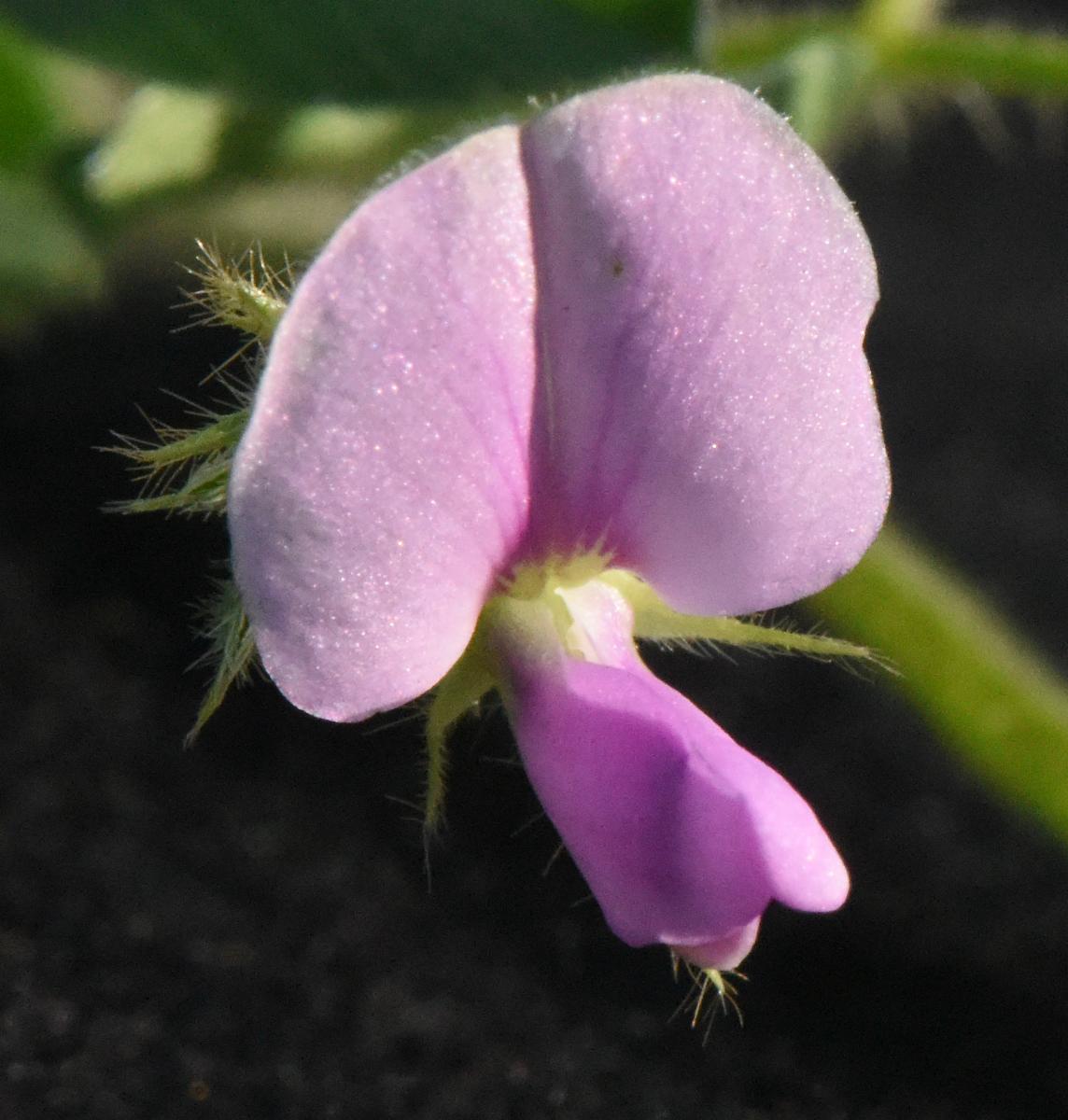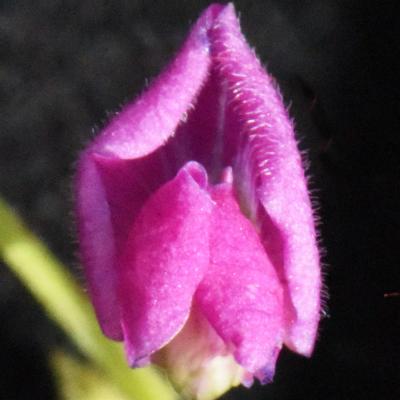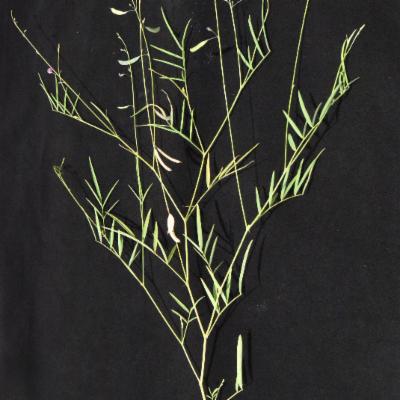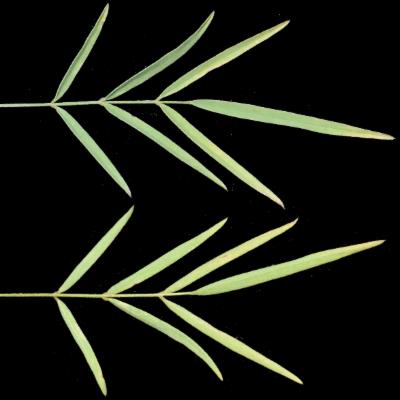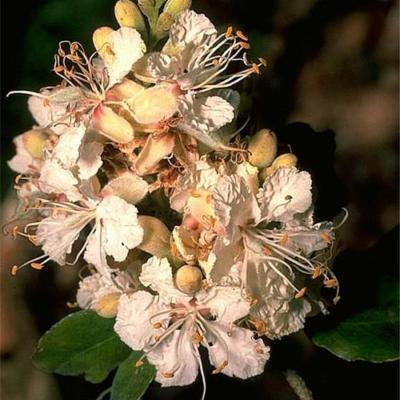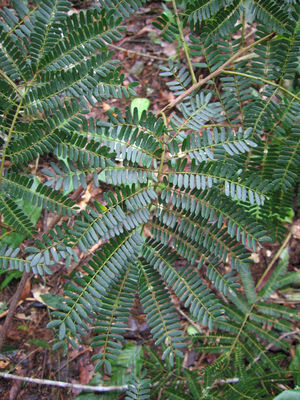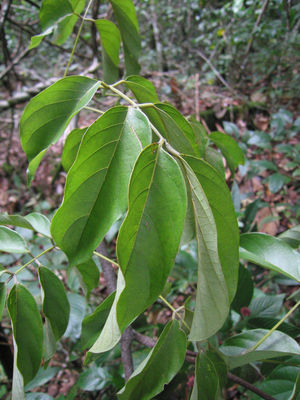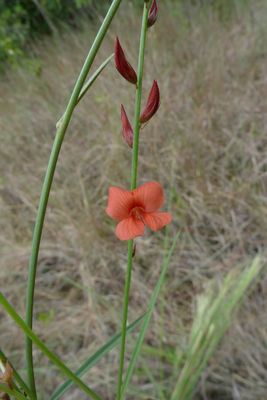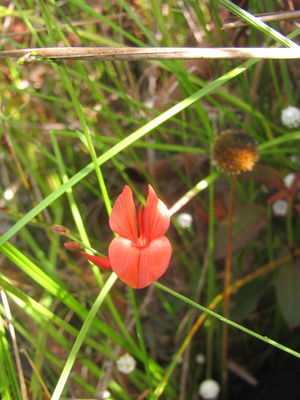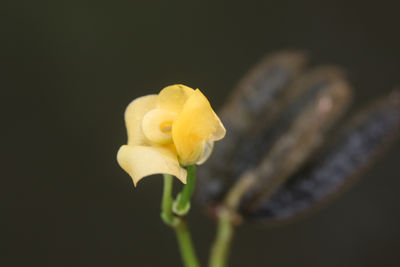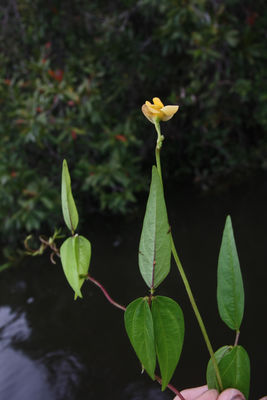Description
Family Leguminosae (Fabaceae)
Habits: herbs (rarely aquatic), shrubs, vines, lianas (often with tendrils and/or hooks), and trees; stipules present (although often falling early), sometimes large and leaf-like, sometimes modified into spines. Leaves usually alternate, simple, unifoliolate, 3-foliolate, pari- or imparipinnate or bipinnately compound, then pinnae with one to numerous pairs of leaflets; petiole with a basalpulvinus (when unifoliolate then with an apical one as well). Inflorescencesaxillary or terminal, racemes, spikes, panicles, heads or solitary flowers. Flowers usually bilaterally symmetrical, usually actinomorphic in subfamily Mimosoideae, and sometimes actinomorphic in Caesalpinioideae and Papilionoideae, usually hermaphrodite, rarely unisexual; sepals (4-)5, free or fused; petals 4-5, sometimes absent or 1-3, varying in size and shape; androecium usually of 9 or 10 stamens, sometimes reduced to 1, 3, 4, 5 or 6, and sometimes of 50-100+ (part of subfamiliy Mimosoideae), filaments partly fused into a tube or free, anthers dehisce by short to long longitudinal slits, or sometimes by apical pores; nectary(ies) is/are often present around the superiorovary, carpel 1 (rarely many), locule 1 (rarely 2), the ovules 2-many. Fruits usually a one- to many-seeded legume, dehiscent or indehiscent, dry or fleshy, inflated or compressed, sometimes winged (samaroid) or breaking into one-seeded articles (lomentaceous), rarely a drupe, sometimes a craspedium. Seeds sometimes with more or less elaborate aril, usually with a hard seed coat; endosperm little or absent; embryo large, the cotyledons conspicuous.
Subfamily Papilionoideae (Faboideae)
Habits: herbs, shrubs, trees, twiners or lianas; root nodules generally present. Leaves usually compound (paripinnate or imparipinnate, palmate or trifoliolate) with two to many leaflets, sometimes simple or unifoliolate, rarely with a tendril. Flowers usually bilaterally symmetrical pea flowers; sepals united into a tube at base; petals imbricate in bud, the median petal (also known as the standard, banner or vexillum) overlapping the other 4; stamens (9-)10(-many), sometimes dimorphic, usually diadelphous (9 fused + 1 free or 5 + 5), sometimes monadelphous (all 10 fused) or filaments free, exserted or included in the corolla. Seeds usually hard and with a complex hilar valve (as in beans and peas), pleurogram absent.
Important literature
Aymard C., G.A., Cuello A., N.L., Berry, P.E., Rudd, V.E., Cowan, R.S., Fantz, P.R., Maxwell, R.H., Stirton, C.H., Poppendieck, H.-H., Lima, H.C. de, Fortunato, R.H., Stergios, B., Enrich, N.X. de, Neill, D.A., Pennington, R.T. & Gil, C. 1999. Fabaceae. In: P.E. Berry, K. Yatskievych & B.K. Holst (vol. eds.), Flora of the Venezuelan Guayana, 5: 231-433. Missouri Botanical Garden, St Louis.
Bruneau, A., Breteler, F.J., Weiringa, J.J., Gervais, G.Y.F. & Forest, F. 2000. Phylogenetic relationshiips in tribes Macrolobieae and Detarieae as inferred from chloroplast trnL intron sequences. In: P.S. Herendeen & A. Bruneau (eds.). Advances in Legume Systematics 9: 121-149. Royal Botanic Gardens, Kew.
Bruneau, A., Forest, F., Herendeen, P.S., Klitgaard, B.B. & Lewis, G.P. 2001. Phylogenetic relationships in Caesalpinioideae (Leguminosae) as inferred from chloroplast trnL intron sequences. Syst. Bot. 26: 487-514.
Bruneau, A., Mercure, M. Lewis, G.P. & Herendeen, P.S. 2008. Phylogenetic patterns and diversification in caesalpinioid legumes. Botany 86: 697-718.
Doyle, J.J., Chappill, J.A., Bailey, C.D. & Kajita, T. 2000. Towards a comprehensive phylogeny of legumes: evidence from rbcL sequences and non-molecular data. In: P.S. Herendeen & A. Bruneau (eds.). Advances in Legume Systematics part 9: 1-20. Royal Botanic Gardens, Kew.
Doyle, J.J & Luckow, M.A. 2003. The rest of the Iceberg. Legume Diversity and Evolution in a Phylogenetic Context. Plant Physiol. 131: 900-910.
Du Puy, D.J., Labat, J.-N., Rabevohitra, R., Villiers, J.-F., Bosser, J. & Moat, J. 2002. The Leguminosae of Madagascar. Royal Botanic Gardens, Kew. 737 pp.
Graham, P.H. & Vance, C.P. 2003. Legumes: Importance and Constraints to greater use. Plant Physiol. 131: 872-877.
Greuter, W. et al. 2000. International code of botanical nomenclature adopted by the Sixteenth International Botanical Congress, St. Louis, July-August 1999. Regnum Vegetabile, vol. 338, 474 pp.
Herendeen, P. S., Bruneau, A. & Lewis, G. P. 2003. Phylogenetic relationships in Caesalpinioid legumes: a preliminary analysis based on morphological and molecular data. In: B.B. Klitgaard & A. Bruneau (eds.). Advances in Legume Systematics 10: 37-62. Royal Botanic Gardens, Kew.
ILDIS: International Legume Database & Information Service. http://www.ildis.org/
Isely, D. & Polhill, R.M. 1980. Leguminosae subfamlily Papilionoideae. Taxon 29(1): 105-119.
Kajita, T. Ohashi, H., Tateishi, Y., Bailey, C.D. & Doyle, J.J. 2001. rbcL and legume phylogeny, with particular reference to Phaseoleae, Millettieae and allies. Syst. Bot. 26: 515-536.
Klitgaard, B.B. & Bruneau, A. (eds.) 2003. Advances in Legume Systematics, part 10. Higher Level Systematics. Royal Botanic Gardens, Kew. 422 pp.
Lewis, G.P. 1987. Legumes of Bahia. Royal Botanic Gardens, Kew. 369 pp.
Lewis, G.P. Owen, P.E. 1989. Legumes of the Ilha de Maracá. Royal Botanic Gardens, Kew. 95 pp.
Lewis, G.P. & Klitgaard, B.B. 2002. Leguminosas del sur de Ecuador, pp. 185-224. En: Z. Aguirre M., J. E. Madsen, E. Cotton y H. Balslev (eds.), Botánica Austroecuatoriana, Universidad de Aarhus, Dinamarca.
Lewis, G.P. & Schrire, B.D. 2003. Leguminosae or Fabaceae ? In: B.B. Klitgaard & A. Bruneau (eds.). Advances in Legume Systematics part 10: 1-3. Higher Level Systematics. Royal Botanic Gardens, Kew.
Lewis, G.P. & Schrire, B.D. 2005. Leguminosae or Fabaceae ? In: G. Lewis, B. Schrire, B. Mackinder & M. Lock. Legumes of the World, pp. 1-2. Royal Botanic Gardens, Kew.
Lewis, G., Schrire, B., Mackinder, B., Lock, M. (eds.) (2005). Legumes of the World. Royal Botanic Gardens, Kew. 577 pp.
Lindley, J. 1836. Leguminosae or Fabaceae tribe Papilionaceae, pp. 148-157, In: A natural system of botany. Longman, London.
Luckow, M., Miller, J.T., Murphy, D.J. & Livshultz, T. 2003. A phylogenetic analysis of the Mimosoideae (Leguminosae) based on chloroplast analysis DNA sequence data. In B.B. Klitgaard & A. Bruneau (eds.). Advances in Legume Systematics part 10: 197-220. Higher Level Systematics. Royal Botanic Gardens, Kew.
Neill, D.A., Klitgaard, B.B. & Lewis, G.P. (1999). Caesalpiniaceae, Mimosaceae and Fabaceae. In: P.M. Jørgensen & S. León-Yánez (eds.). Catalogue of the vascular plants of Ecuador. Monographs in Systematic Botany from the Missouri Botanical Garden, vol. 75: Caesalpiniaceae pp. 368-374, Fabaceae pp. 468-484, Mimosaceae pp. 591-601.
Polhill, R.M & Raven, P.H. (eds.) 1981. Advances in legume Systematics part 1. Royal Botanic Gardens, Kew. 425 pp.
Polhill, R.M & Raven, P.H. (eds.) 1981. Advances in legume Systematics part 2. Royal Botanic Gardens, Kew. 427-1049 pp.
Polhill, R. M. 1994. Complete synopsis of legume genera. In: F.A. Bisby, J. Buckingham, & J.B. Harborne. Phytochemical Dictionary of the Leguminosae, pp.: xlix-lvii. Chapman & Hall.
Pennington, R.T., Lavin, M., Ireland, H., Klitgaard, B.B. & Preston, J. 2001. Phylogenetic relationshsips of basal papilionoid legumes based upon sequences of the chloroplast trnL intron. Syst. Bot. 26: 537-566.
Stafleu, F.A. 1978. International code of botanical nomenclature adopted by the Twelfth International Botanical Congress, Leningrad, July 1975. Regnum Vegetabile, vol. 97, 457 pp.
Van den Bosch, K. & Stacey, G. 2003. Advances in Legume Biology. Plant Physiol. 131: 839.
Wojciechowski, M.F., Sanderson, M.J., Steele, K.P. & Liston, A. 2000. Molecular phylogeny of the "Temperate Herbaceous Tribes" of papilionoid legumes: a supertree approach. In: P.S. Herendeen & A. Bruneau (eds.). Advances in Legume Systematics 9: 277-298. Royal Botanic Gardens, Kew.
Wojciechowski, M.F. 2003. Reconstructing the phylogeny of legumes (Leguminosae): an early 21st century perspective. In: B.B. Klitgaard & A. Bruneau (eds.). Advances in Legume Systematics part 10: 5-35. Higher Level Systematics. Royal Botanic Gardens, Kew.
Wojciechowski, M.F., Lavin, M. & Sanderson, M.J. 2004. A phylogeny of legumes (Leguminosae) based on analysis of the plastid matK gene resolves many well-supported subclades within the family. Amer.J.Bot. 91(11): 1845-1861.
Zarucchi, J.L. 1993. Fabaceae. In: L. Brako & J.L. Zarucchi (eds.). Catalogue of the flowering plants and gymnosperms of Peru. Monographs in Systematic Botany from the Missouri Botanical Garden, vol. 45: Fabaceae pp. 444-527.

